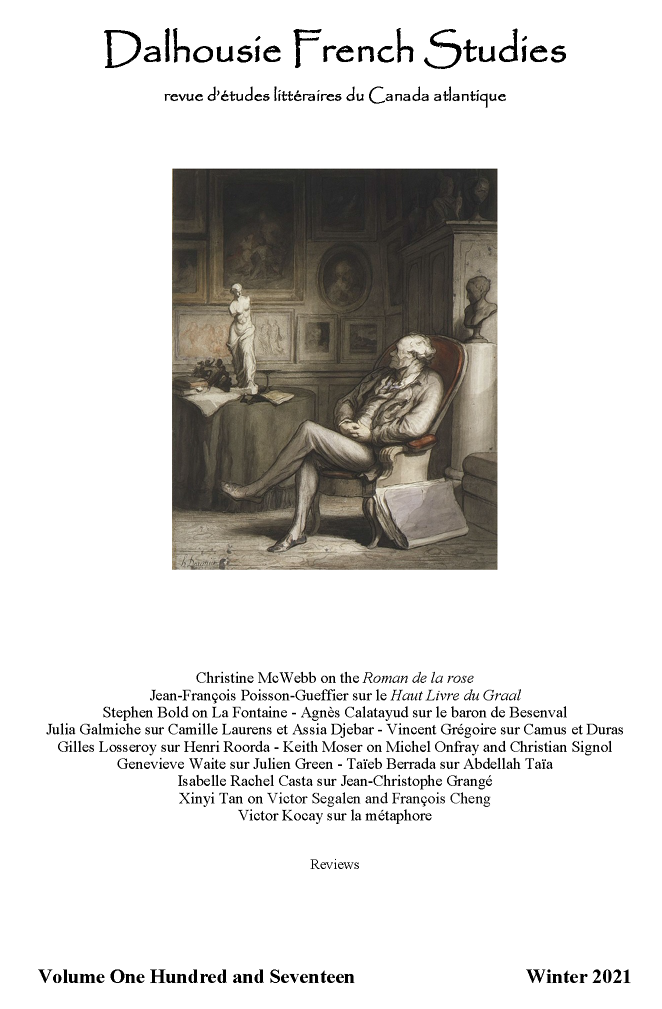(Deé)montrer en (deé)montant : recadrage des identiteés narratives dans L'Avenir de Camille Laurens et Vaste est la prison d'Assia Djebar.
Résumé
L'Avenir [The Future] by Camille Laurens (1998) and Vast is the Prison by Assia Djebar (1995) are two novels characterized by their absence of linearity on a narrative level as well as a chronological level. This article focuses on the articulation between I and she, auto and fiction, present and past, literary language and cinematic language. It seeks to show how this dual structure provides a shape-shifting, transmedial aspect to the novels being examined, out of which emerges an oxymoric, hybrid narrative better able to reflect the complexity of the female identity. The cinematic language is not simply used to enhance the literay quality of the writing. On the contrary, it plays a significant role in making the narrative more complex and, by doing so, not only replicates at the micro level (content) the dialectics that can be observed at the micro level (form or narrative structure), but also contributes to (re)framing narrative identities. The cinematic language therefore delimits the range of the camera in which the female subject is evolving. At the same time, the reverse angle shot, which acts as a counter-narrative, enables the female subject to reflect on her past self while heralding what is left outside the scope of the camera and is yet to be seen.
L‘Avenir de Camille Laurens (1998) et Vaste est la prison d‘Assia Djebar (1995) sont deux romans caractérisés par leur absence de linéarité, tant sur le plan narratif que sur le plan chronologique. Cet article s'intéresse à l'articulation entre je et elle, auto et fiction, présent et passé, langage littéraire et langage cinématographique, cette structure duale donnant à l‘oeuvre un aspect protéiforme, transmédial, duquel émerge un roman oxymorique, hybride, mieux à même de refléter la complexité de l‘identité narrative féminine. Le langage cinématographique n'est pas pensé ici comme simple faire-valoir du langage littéraire. Au contraire, il participe activement à la complexification de la narration, prolongeant au niveau micro (fond) la dialectique observable au niveau macro (forme ou structure narrative), mais aussi au (re)cadrage des identités narratives. Le langage cinématographique délimite ainsi le champ du présent dans lequel évolue le sujet féminin, le contre-champ/chant du passé permettant un retour du sujet sur lui-même, tout en préfigurant le hors champ des possibles à venir.


